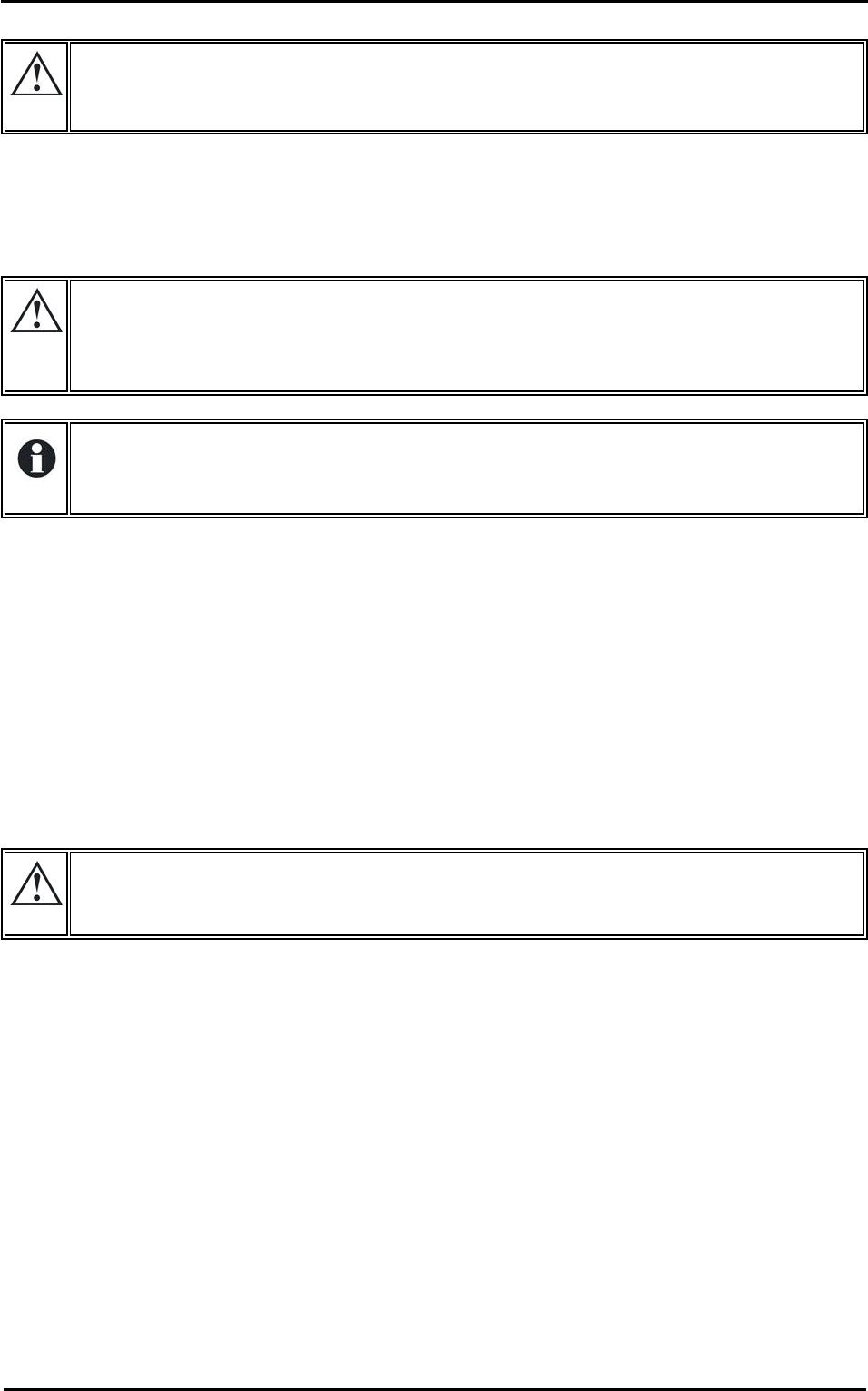
STUDER Innotec Xtender
Installation and operating Instructions Xtender V1.3 Page 13
4.5.4
BATTERY
-
SIDE CONNECTION
Before connecting the battery, carefully check the voltage and polarity of the battery using
a voltmeter.
Incorrect polarity or surge voltage may seriously damage the device.
Prepare the batteries for connection: appropriate battery clamps, protection device (f), cable in good
conditions with correctly fitted clamps.
Fasten the negative cable on to the negative pole (-) of the battery and the positive cable on the
open protection device (f).
The battery cables must be protected by one of the following measures in all cases:
- protection device (fuse) at each pole
- protection device (fuse) on the pole connected to the earth
- mechanical envelope making an accidental short-circuit impossible.
When connecting the battery, a spark may occur when connecting the second pole. This
spark is due to the load of the internal filtering capacity of the Xtender.
When connecting the battery it is necessary to check that the configuration values of the Xtender
conform to the recommendations of the battery manufacturer. Non-conforming values may be
dangerous and/or seriously damage the batteries. The default values of the battery’s charge
threshold level are shown in fig. 3a and specified in the configuration table p.34. If they prove not to
conform, it is necessary to modify them via the RCC 02/03 remote control before connecting the
voltage sources on the AC input. Studer Innotec is not responsible for default values not
corresponding with the recommendations of the manufacturer.
If the factory settings are modified, the new values must be entered on the configuration table
on p. 34 of this manual. The default values proposed by Studer Innotec are the usual values for gel
batteries (VRLA or AGM).
The calibre of the protection device (f) must be adapted to the cable section and also mounted as
close as possible to the battery.
The clamps must be carefully fixed and tightened sufficiently to guarantee minimum loss.
Insufficient tightening may cause dangerous heating at the connection point.
For safety reasons, we recommend an annual check on the tightness of all connections.
For mobile installation the connections should be checked more frequently for tightness.
The cabling and connection of the installation should only be carried out by an appropriately qualified
professional. The installation material such as cables, connectors, distribution boxes, fuses, etc.
must be adapted and must conform to the applicable laws and regulations the application under
consideration.
4.5.5
E
ARTHING THE BATTERY
One of the two battery conductors can be earthed. This may be either the positive or negative pole.
In all cases the installation must conform to the local regulations and usage or specific standards
associated with the application.
In case of earthing, the earthing conductor section must at least be equivalent to the section of the
battery conductor. The earthing of the equipment must also adhere to these regulations. In this case
the use of the additional earthing screw is recommended (fig. 2b (17)), which is located at the front
of the device between the two lower fastening screws.


















